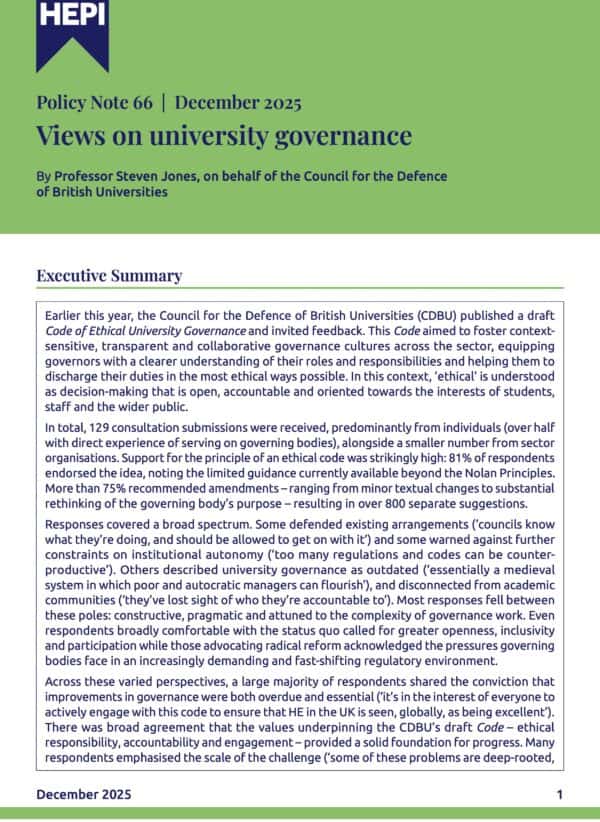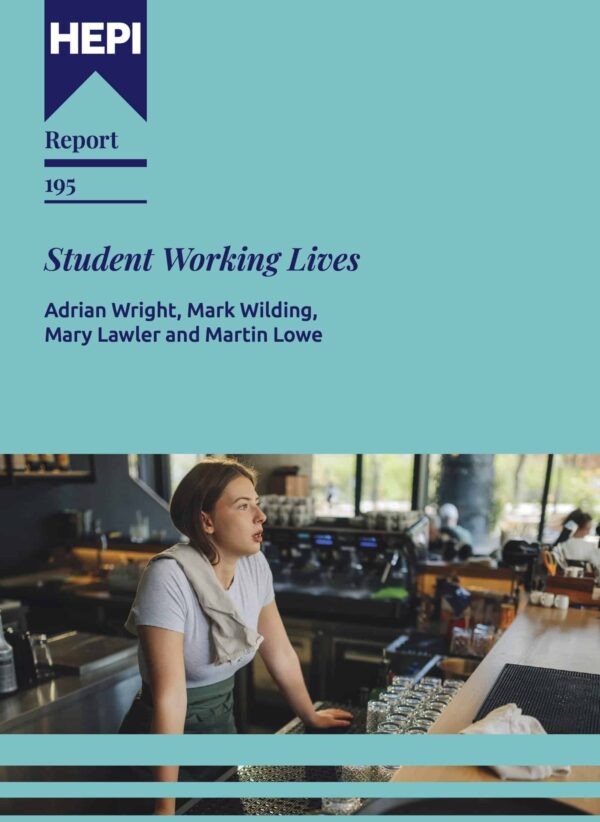The post-16 pivot: why higher education needs to lean into the skills revolution
This blog was kindly authored by Dr. Ismini Vasileiou, Associate Professor at De Montfort University.
This blog is the first in our series responding to the post-16 education and skills white paper.
The government’s new Post-16 Education and Skills White Paper reframes how the UK prepares people for work, learning, and life. It promises a simpler, more coherent system built around quality, parity of esteem, and progression – introducing new V-Levels, reforming Level 3 and below qualifications, and setting out clearer routes into higher education and skilled employment.
Within it there is an unmistakable message for universities: higher education is no longer a separate tier but a partner in a joined-up skills ecosystem.
This direction of travel strongly echoes the recommendations of the Cyber Workforce of the Future white paper, which called for a unified national skills taxonomy, stronger coordination between education and employers, and consistent frameworks for developing technical talent. The government’s post-16 reforms, though broader in scope, now seeks to achieve at system level what the cyber sector has already begun to pilot.
Reimagining pathways: from fragmentation to flow
At the heart of the White Paper lies the ambition to create “a seamless system where every learner can progress, without duplication or dead ends.” The proposed V-Levels for 16-19-year-olds aim to sit alongside A-Levels, replacing hundreds of overlapping technical qualifications and creating a nationally recognised route into both higher technical and academic study.
Reforms to Level 2 and entry-level qualifications will introduce new “Foundation Programmes” that build essential skills and prepare learners for work or further study. Alongside these, stepping-stone qualifications in English and Mathematics will replace automatic GCSE resits, acknowledging that linear repetition has failed to deliver progress for many young people.
The emphasis on simplified, stackable routes reflects the very principles behind the Cyber Workforce of the Future model, which proposed interoperable learning pathways connecting schools, further education, higher education, and industry within a single skills continuum. What began as a sector-specific call for alignment in cyber is now being written into national policy.
Higher education’s new context
The White Paper links post-16 reform directly to the Industrial Strategy and to Skills England’s mission to align learning with labour-market demand. For universities, several themes stand out:
- Progression and parity: Higher education is expected to work together with further education and employers to ensure that learners completing V-Levels and higher technical qualifications can progress seamlessly into Level 4, 5, and 6 provision.
- Higher Technical Qualifications (HTQs): The expansion of HTQs in growth areas such as AI, cyber security, and green technology positions universities as key co-developers and deliverers of technical education.
- Quality and accountability: The Office for Students will have powers to limit recruitment to poor-quality courses and tie tuition-fee flexibility to demonstrable outcomes, reinforcing the need for robust progression and employability data.
- Lifelong learning and modularity: The commitment to the Lifelong Learning Entitlement demands interoperability of credits across further education and higher education – another concept long championed in the cyber-skills ecosystem.
Taken together, these reforms require universities to move beyond disciplinary silos and become brokers of opportunity – enabling flexible, lifelong learning rather than simply delivering three-year degrees.
From strategy to delivery: lessons from cyber that can scale
The Cyber Workforce of the Future paper provides a live example of how the government’s post-16 vision can be delivered in practice. Its framework rests on three transferable pillars:
- Unified skills taxonomy – mapping qualifications and competencies against occupational standards to create a common language for education and industry.
- Education – industry bridge – aligning curriculum design and placements to real-world demand through structured partnerships between universities, FE colleges, and employers.
- Inclusive pipeline development – embedding equity and access by designing pathways that work for diverse learners and career changers, not just traditional entrants.
These principles are not unique to cyber; they represent a template for how any technical or digital field can align with the White Paper’s objectives. The challenge now is scaling this joined-up approach nationally across disciplines – from advanced manufacturing to health tech and green energy.
Six priorities for universities
- Redefine admissions and progression routes
Recognise new qualifications such as V-Levels and HTQs as rigorous, valued entry points to higher education. - Co-design regional skills ecosystems
Partner with futher education colleges, local authorities, and industry to map regional growth sectors and align provision accordingly. - Develop flexible, modular curricula
Build stackable learning blocks that learners can access and re-enter throughout their careers under the Lifelong Learning Entitlement. - Co-create with employers
Move from consultation to collaboration, embedding placements, apprenticeships, and micro-credentials that reflect labour-market demand. - Support learner transition
Provide structured academic and digital-skills support for students from vocational or stepping-stone routes. - Measure outcomes transparently
Track progression, attainment, and employability by qualification route to evidence value and inform continuous improvement.
Opportunities and risks
The White Paper’s success will depend on genuine partnership between universities, further education providers, and employers. Without coordination, the new structure could replicate old hierarchies – leaving V-Levels or technical routes seen as second-tier options. Similarly, tighter regulation must not deter universities from widening participation or admitting learners who require additional support.
The cyber-skills sector demonstrates what can work when these risks are managed: clear frameworks, shared standards, and collaborative delivery that bridges academic and technical domains. Replicating this across disciplines will require sustained investment and policy stability, not short-term pilots.
A new social contract for tertiary education
The Post-16 Education and Skills White Paper represents a genuine reset for tertiary education – one that values technical excellence, lifelong learning, and regional growth alongside academic achievement.
Its goals mirror those already embedded within the Cyber Workforce of the Future initiative: building a national system where education and employment are continuous, mutually reinforcing stages of one journey. The cyber model shows that when universities act as integrators – connecting further education, employers, and government – policy ambitions translate into measurable workforce outcomes.
What began as a sector-specific experiment can now serve as a blueprint for system-wide reform. If universities across all disciplines embrace this pivot, they can help turn the White Paper’s vision into reality – a cohesive, agile, and inclusive skills ecosystem ready for the future economy.







Comments
Ron Barnett says:
That last sentence – paragraph even – is revealing. No mention of education; and very little mention of it through the article.
Lurking in the text is the phrase ‘… a national system where education and employment are continuous’. This implies some separateness of meaning/ identity between ‘education’ & ’employment’. So just what does/ could attach to the idea of education?
Over the past 30 years, gradually the concept of education has faded to be eclipsed if not replaced by the concept of skills; and the present article is representative of this shift.
Not only is it no longer possible to speak of education without also speaking of skills; it is now the much more serious matter that ‘debate’ speaks of skills without even doffing its cap to the idea of education.
I wonder if we might have a HEPI blog that seeks to offer an idea of education for the twenty-first century which by no means neglects the matter of skills but seeks also to place that matter of skills in a much wider context of what it might be that education offers the self, society and the world (not least against the horizon of the Anthropocene – a concept rarely mention in HEPI dispatches).
Kindly
Ron Barnett
PS: If I listen to a pianist in a concert, I take it as read that she has a huge array of skills; that’s simply understood. It is largely nowadays unimportant. What is important is what she brings to the matter in hand ..
Reply
Replies
Jonathan Alltimes says:
The idea of education was abandoned under the Major government by education secretaries Patten and Shepherd, as education no longer has a purpose and if an idea no longer has a purpose then it no longer needs to exist, the past 40 years or so has been a set of educational habits leftover with no direction for employment or anything else, it was left to adapt and evolve.
Reply
Jonathan Alltimes says:
What are the chronic technical skills vacancies by occupation, industry, level, and area? We need technical skills for the infrastructure. A means of technical skills training needs to be provided with employers. Employers should advise providers what they need and how it should be delivered, as always the arguments are about content standards, that is why apprenticeships are the best because firm-specific skills and general skills for the occupation are required: specialisation.
Reply
Add comment